When Is Surgery the Right Option for GERD?
Understanding GERD
Gastroesophageal reflux disease (GERD) happens when stomach acid repeatedly flows back into the esophagus, causing symptoms like heartburn, regurgitation, or throat irritation.
For many, medications such as proton pump inhibitors (PPIs) offer short-term relief. But when symptoms persist despite treatment—or when medication dependence becomes a lifelong routine—it may be time to explore surgical options.
At Tampa Bay Reflux Center, our specialists help patients find long-term relief using evidence-based surgical solutions tailored to their condition.
When Medications Aren’t Enough
Although PPIs reduce acid, they don’t fix the root cause: a weak lower esophageal sphincter (LES). Studies show that 30–40% of GERD patients continue to have symptoms despite medical therapy (Scarpellini et al., 2016).
Long-term PPI use may also carry potential risks, including nutrient malabsorption and increased infection risk (Freedberg et al., 2017).
If you’re relying on daily medication, waking up with heartburn, or still feeling discomfort after meals, surgery may offer a permanent solution.
When to Consider GERD Surgery
Surgery is recommended when:
Symptoms persist despite optimized medical therapy
Complications like esophagitis or Barrett’s esophagus are present
Hiatal hernia contributes to reflux
You wish to stop or reduce medication dependence
Reflux causes coughing, aspiration, or sleep issues
(Stefanidis et al., 2017; Gyawali et al., 2018)
At Tampa Bay Reflux Center, we use advanced testing—such as endoscopy, manometry, and pH monitoring—to confirm GERD and determine the best surgical approach for you.
Surgical Options for GERD
1. Laparoscopic Nissen Fundoplication
This procedure reinforces the LES by wrapping the top of the stomach around the lower esophagus. It remains the gold standard, with symptom control rates exceeding 90% (Broeders et al., 2013).
2. LINX® Reflux Management System
A minimally invasive alternative using a magnetic ring to strengthen the LES while preserving swallowing and belching. Studies show it provides comparable reflux control to fundoplication, with faster recovery and fewer gas-bloat issues (Ganz et al., 2013).
3. Hiatal Hernia Repair
If reflux is worsened by a hiatal hernia, repairing the diaphragm’s opening helps restore anatomy and prevent acid backflow.
Benefits of Surgical Treatment
Modern reflux surgery offers lasting relief for properly selected patients. Benefits include:
Long-term symptom control
Reduced need for daily medication
Improved esophageal healing
Better sleep and quality of life
A JAMA Surgery review confirmed that surgical therapy provides superior symptom control and higher satisfaction than long-term medication in chronic GERD.
What Recovery Looks Like
At Tampa Bay Reflux Center, surgeries are performed laparoscopically or robotically, allowing for:
Smaller incisions and minimal scarring
Short hospital stays (often same-day discharge)
Quick return to normal activity, usually within 1–2 weeks
Our team provides personalized recovery guidance, including dietary progression and lifestyle recommendations to protect your repair and ensure lasting results.
GERD surgery isn’t for everyone—but when medication isn’t enough, it can provide long-term freedom from reflux, restore comfort, and protect your esophagus.
At Tampa Bay Reflux Center, we combine advanced surgical technology with personalized care to help patients across the Tampa Bay area achieve lasting, medication-free relief from GERD.
If you’re ready to take the next step, schedule a consultation today to explore your options.
Works Cited
Broeders, J. A., Draaisma, W. A., Bredenoord, A. J., et al. (2013). Ten-year outcome of laparoscopic and conventional Nissen fundoplication: randomized clinical trial. Annals of Surgery, 257(5), 890–896. link
Freedberg, D. E., Kim, L. S., & Yang, Y. X. (2017). Risks and benefits of long-term use of proton pump inhibitors: expert review. Gastroenterology, 152(4), 706–715. link
Ganz, R. A., Peters, J. H., Horgan, S., et al. (2013). Esophageal sphincter device for gastroesophageal reflux disease. New England Journal of Medicine, 368(8), 719–727. link
Gyawali, C. P., Kahrilas, P. J., Savarino, E., et al. (2018). Modern diagnosis of GERD: The Lyon Consensus. Gut, 67(7), 1351–1362. link
Scarpellini, E., Ang, D., Pauwels, A., De Bortoli, N., & Tack, J. (2016). Management of proton pump inhibitor-resistant reflux symptoms. Therapeutic Advances in Gastroenterology, 9(7), 933–948. link
Stefanidis, D., Hope, W. W., Reardon, P. R., & Fanelli, R. D. (2017). Guidelines for surgical treatment of gastroesophageal reflux disease. Surgical Endoscopy, 31(10), 3850–3862. link
